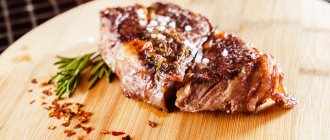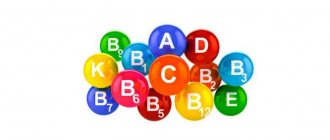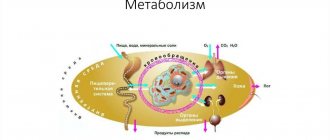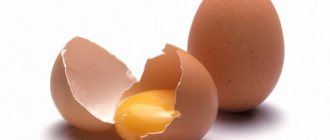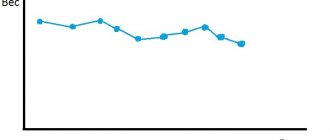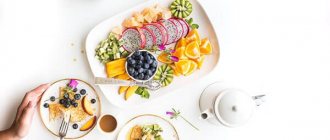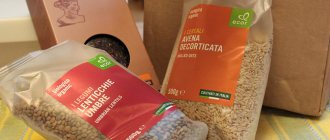You can eat healthy and low-calorie foods as much as you like, but your weight will remain the same if you don’t adjust your snacks. It is occasional meals that often play a decisive role in health.
Our menu usually includes a wide variety of products that provide the body with the necessary vitamins and minerals. In addition to main meals, during the day we also feel the need for quick snacks that satisfy hunger and replenish energy. They help keep the body in good shape and ensure stable metabolism.
Stereotypes that the daily diet should consist of only 3 full meals are long gone. By eating 5-6 times a day, we protect ourselves from overeating and also maintain normal well-being.
Healthy snacks should not contain fast carbohydrates and large amounts of sugar. It is necessary to completely exclude flour products, fatty foods, snacks and chips. Therefore, it is better to give preference to fresh fruits and vegetables, protein products, and complex carbohydrates. They are able to satiate for a long time, but at the same time maintain a feeling of vigor and lightness, without harm to the digestive system.
Nuts
Nuts are a very nutritious, healthy and high-calorie snack, so it is better to eat no more than 10 g at a time. They contain a high content of vitamins B3 and E, as well as magnesium, potassium, phosphorus, which help concentrate during mental work. Regular consumption of nuts activates brain activity, improves memory and stimulates performance. Nuts can also lower cholesterol, normalize blood sugar levels, activate the reproductive system and prevent heart attacks and strokes.
Why do you need snacks at work and school?
Photo by Geraud pfeiffer: Pexels
The main role of snacks is to replenish energy reserves, ensure optimal blood glucose levels, and eliminate acute hunger between main meals.
A wisely planned healthy snack will help maintain and strengthen the health of both children and adults, prevent overeating and excess weight gain, and reduce cravings for unhealthy and junk food.
Even if you're not too hungry, it will be difficult to resist your coworkers' cookies, waffles, chips, and candies if you don't have a healthy alternative on your desk or in your drawer.
Maintaining glucose levels helps reduce stress and anxiety, improves mood, and helps prevent the development of depression.
Thoughtful and prepared healthy snacks in advance will help you avoid gaining weight from a sedentary job, maintain a healthy gastrointestinal tract and instill healthy eating habits in your children.
Berries and fruits
Most fruits and berries contain fiber, as well as minerals and vitamins. But some of them contain a lot of sugar, for example figs, bananas, persimmons, grapes. They are best consumed in small doses and in the first half of the day. Tasty and healthy snacks as a dietary menu include grapefruit, watermelon, and strawberries. As for the apple, it has long been used in PP diets, but, in addition to the high level of vitamin complex, fiber and iron content, apple juice increases appetite, which is not very good for weight loss. Therefore, when choosing berries and fruits as a healthy snack, you need to be more careful so as not to harm your health.
Snacks with proper nutrition. Should you snack if you're losing weight?
A snack is a small meal, the main task of which is to prevent the development of severe hunger between main meals.
Endocrinologists and nutritionists agree that for proper metabolism, maintaining a healthy digestive system and maintaining a normal weight, you need to eat small portions 4-6 times a day. The volume of an empty stomach of an adult is 0.5 liters. In children, the stomach volume is smaller and depends on age. It is very undesirable to stretch it out by eating large portions, but rarely - one to three times a day. During the break between meals, a strong feeling of hunger appears, and it seems that the amount of food is not enough. A distended stomach requires filling with more and more food, which leads to digestive problems, disrupts metabolism, and contributes to the appearance of fat deposits. That's why it's so important for health to eat often and in small portions. There should be at least one and a half to two hours between meals. You need to snack on healthy foods that contain proteins and complex carbohydrates. Such foods are beneficial for digestion and promote the formation of muscle rather than fat tissue. Eating healthy snacks throughout the day improves your metabolism and helps curb your appetite. The amount of intermediate snack should be 2 or even 3 times less than the serving of the main food. Maintaining water balance plays an important role; you need to drink at least 1.5 liters of water per day, but everything is individual and depends on the age and body weight of the child.
Why do we need to snack?
Snacking is necessary to control your hunger levels. The longer the breaks between meals, the stronger your hunger. This process is caused by the hormone ghrelin, which is produced by stomach cells. The longer food does not enter the body, the more hormone is produced, the stronger the hunger. Hunger, like fear, has big eyes. This is why when you are very hungry, it becomes incredibly difficult to control what you eat. The result is overeating. If you have snacks between main meals, severe hunger does not occur; in addition, the body spends energy on the absorption of these small portions of food, which maintains the rate of metabolic processes at a good level.
The second important property of snacking is the reduction in the volume of main meals. This is, again, related to hunger control. Small portions of food help us maintain a constant feeling of slight satiety. This is also good from the point of view of the functioning of the digestive system. A small amount of food is better absorbed and does not overload the digestive tract. In this case, there are enough digestive enzymes to completely process the food bolus into easily digestible components, and the released energy is spent by the body for current needs. When portions of food are clearly excessive, the resources of the digestive system are only sufficient to process the incoming food into large intermediate compounds, which are absorbed much less well. In this regard, split meals with snacks are often prescribed as a treatment for diseases of the digestive system.
And lastly, snacking creates ideal conditions for active fat burning . Eating with long breaks leads to the fact that the body begins to sound the alarm and goes into saving mode, metabolic processes slow down. The body strives to spend as little as possible and store as much as possible. You already know very well where these reserves are deposited.
The best time to have a snack is:
- second breakfast (if the menu for the day is correctly planned, it should be from 11.00, but no later than 12.00);
— afternoon tea (from 16.00 – 17.00);
- second dinner (shortly before bed, but no later than 21.00).
Healthy snacks.
The presence of simple carbohydrates in them is undesirable. They do not satisfy hunger; on the contrary, they lead to its sharp increase. You have probably noticed yourself that after eating a chocolate bar or a pastry, or a piece of cake, you feel very short-lived satiety, which is quickly replaced by brutal hunger. Sweets should be included in your diet, but should be eaten only after your hunger has been satisfied, as a nice little addition. Snacks should fill you up, and proteins and complex carbohydrates do this job well. For example, a “proper” sandwich with dark bread and a small piece of poultry is, in my opinion, a very good option. Here I would include a handful of nuts (naturally, not salty or sweet), cottage cheese, any vegetables and not very sweet fruits. Good snacks include low-fat lactic acid products (kefir, natural yogurt, cottage cheese, low-fat cheese), dark bread and crispbread, not very sweet fruits (apple, pear), almost all vegetables, boiled or baked beef, chicken. All these products are easy to take with you, and even if you are on the road or at school, you can snack on them without attracting too much attention.
Wrong snacks.
Chips, sweet or salty nuts, seeds, all store-bought crackers, glazed cheese curds, sweet yoghurts, sandwiches with butter and store-bought sausages, baked goods, and chocolate are absolutely not suitable as a snack. These foods are treats (too high in calories, or too sweet, or fatty, or all three), which means they are not intended to satisfy hunger.
What's the harm?
- We went through complex processing. After complex processing, the body has to digest food for a long time and with difficulty.
- Contains many “empty” calories. What is meant by empty calories? These are sugar, salt, starch and all other components that do not bring any benefit to the body, but make the product taste good. This also includes substances that fall under the category of preservatives, flavor enhancers, etc. For example, a typical example of unhealthy snacking with empty calories are chips and crackers. They contain a lot of spices and other additives that turn out to be extremely harmful to the child’s body.
- Rich in dyes and flavor enhancers. In principle, these components do not provide any saturation, but subsequently lead to health problems. The brighter the product looks and the stronger its taste, the more dangerous it is. A typical example is most yoghurts and sweet dairy products. Some people think that eating such yogurt is healthy. In fact, it contains so many dyes that it can cause illness.
Make sure that snacks do not turn into full meals, because their task is to maintain a feeling of slight satiety between meals, and not to replace them.
Monitor your children’s body weight and undergo regular medical examinations.
I hope my article was useful to you.
Yours sincerely, pediatric endocrinologist
Anna Viktorovna Morozova
Vegetables
As for the vegetable set for a healthy and healthy snack, there are no restrictions at all. They can be consumed raw or after heat treatment in fairly large quantities. Vegetables are high in fiber, vitamins and antioxidants. Regular consumption of vegetables has a beneficial effect on the digestive system, provides a slight rejuvenating effect and gives energy. Nutritionists advise that you definitely eat broccoli, celery, eggplant, carrots, bell peppers, and radishes. These vegetables are low-calorie products, but at the same time the most useful and affordable. They can also be grilled as a side dish or used as ingredients for a salad or whole grain sandwich.
How should schoolchildren eat?
We bring a trusting child to school, and at graduation we barely reach the shoulders of young men and women eager for an independent life.
School age is the most important period of development, during which the formation of the skeleton and muscles continues, and radical neuro-hormonal changes occur. Qualitative changes occur in the neuropsychic sphere associated with the process of growth and learning.
Eating disorders at this age can lead to disorders of the functioning of the digestive system, cardiovascular system and higher nervous activity.
Here are the basic nutritional requirements for school-age children:
- Adequate protein intake is of great importance, half of which should be of animal origin.
- It is important to eat 5-7 different fresh vegetables and fruits daily
- Be sure to consume complex carbohydrates. Fiber helps increase colon motility, and pectins will help remove toxic substances.
5 healthy snacks for studying
- The use of chemical preservatives, dyes and flavors is unacceptable.
- Sweets and confectionery products are included in the diet of children and adolescents only as dessert in one of the main meals or as an afternoon snack and no more than three times a week.
- Pork and lamb lard, margarine, trans fats, excess salt and simple carbohydrates are not allowed.
Understanding these requirements will help you wisely select foods for healthy school snacks.
Smoothie
Smoothies have become popular only in the last 5-7 years, but Americans began preparing them more than 50 years ago. In essence, this product is no different from baby food in the form of liquid puree. Smoothies are vegetables chopped in a blender for easy consumption. This option allows you to combine the most unusual products to satisfy hunger, remove toxins, and obtain vitamins. Thus, people who for some reason cannot eat solid vegetables prepare themselves healthy smoothies. The only caveat is that there are no sweeteners, yoghurts or syrups. Also, do not forget about the need for stress on the teeth - it is not advisable to completely exclude solid foods. Recipes for healthy smoothies can be found in this article.
Best Snacks
It’s difficult to say definitively which foods are best for you as a snack, because you need to take into account age, excess weight, chronic diseases and other factors. Therefore, it is better to contact doctors and nutritionists for such advice. If you decide to create a healthy snack program yourself, then remember a few tips
:
- Before you stop for a snack, consider how hungry you really are
. To satisfy a slight hunger, a light snack or none at all is enough if the time for a full meal is approaching. - If you are very hungry and there is no opportunity to eat fully, then have a snack, but take your time. You need to eat slowly, and you need to chew your food thoroughly
, then you will be able to control the degree of your satiety and have time to stop in time to prevent overeating. - For a snack, it is better to choose natural products
, especially fruits and vegetables. - Snacks, like meals, are best varied
. This way the body will receive a different set of vitamins and microelements, and you will not suffer from monotony.
Sandwiches with whole grain bread
The most convenient and familiar healthy snack is a sandwich or sandwich. When preparing it, you should take into account the fact that the bread must be whole grain, and the filling must contain a lot of protein. This way it will bring maximum benefits and a long-lasting feeling of fullness. Most often, cheese, meat and vegetables are used for PP snacks, and these provide calcium, protein and vitamins.
Sandwich with tomato and mozzarella (caprese)
Ingredients:
- whole wheat bread;
- tomato;
- mozzarella cheese;
- basil;
- salt, pepper, olive oil.
Preparation: cut the tomatoes and cheese into slices, chop the basil (leaves only). Lightly spread the bread with butter (to reduce calorie content, you don’t have to use butter), pepper and first add salted tomatoes, then basil, and cheese on top. Cover with second toast and grill.
Chicken sandwich
Ingredients:
- boiled or stewed fillet;
- tomato;
- whole grain toast bread;
- cucumber;
- soft cheese;
- lettuce leaves.
Preparation: grease slices of bread with cheese, place sliced meat on top, then tomato and cucumber (the thinner the vegetable slices, the more refined the taste). Cover the vegetables with salad and grill.
Vegetarian PP sandwich
Ingredients:
- whole grain toast;
- spinach or arugula;
- avocado;
- cherry tomatoes;
- pickled cabbage.
Preparation: place avocado slices on bread, then cabbage, and tomatoes on top, season with pepper, salt, and you can add some Italian herbs. Cover the vegetables with spinach or arugula, repeat the layers if desired and place a second piece of bread on top.
Healthy snack options
People snack on things that are convenient and easy to take with them on the road, to work or school, that don’t require cooking or heating, and that don’t get their hands dirty.
Those who love chocolate are recommended to consume dark or bitter chocolate with at least 70% cocoa content. 2-3 slices as a snack are harmless even for those who are on a diet. Chocolate normalizes metabolism and hormonal levels. It is useful for the functioning of the digestive, cardiovascular and nervous systems.
Sandwiches
The most common type of snack is tea, coffee with a sandwich or baked goods made from white flour. Not all sandwiches can be called healthy food: white and brown bread contain fast carbohydrates, which immediately give you a feeling of fullness. But it passes quite quickly, and the desire to eat something else arises. Products containing fast carbohydrates, as well as excess sugar, salt and fat, include sweets, cookies and crackers, chips and crackers. Therefore, they are not considered a healthy snack.
For a regular sandwich to become a healthy food, it needs to be made on wholemeal or whole grain bread; you can also use pita bread. The first of them contains the usual ingredients - sugar and yeast, but it contains more vitamins and fiber, so it is healthier than baking.
To make whole grain bread, pre-soaked, crushed cereals are used, which are then pressed. This bread does not contain yeast, eggs, or fat. It contains soluble fiber, which has a beneficial effect on metabolism and the condition of blood vessels. B vitamins are useful for the functioning of the nervous system.
Whole grain bread is not suitable for weight loss: the number of calories in one slice reaches 300. Often the manufacturer adds nuts, seeds, raisins to the product, then its calorie content increases.
In order not to gain weight from the sandwich, it is recommended to put vegetables (tomatoes, radishes, lettuce, cucumbers), a piece of boiled or baked beef, chicken, turkey or cottage cheese on the bread. To prepare a cottage cheese sandwich, low-fat cottage cheese must be salted to taste, add a couple of spoons of 10% sour cream, a little crushed garlic, finely chopped dill, ground pepper or other spices. Stir the curd mass well and spread it on bread, which can be slightly dried in the toaster.
If you don’t have time to cook, you can buy ready-made curd cheese with mushrooms, herbs, cucumbers, tomatoes and other additives.
Fruits and berries
The easiest way to have a snack is to take with you a pre-washed banana, apple, peach, tangerine or a mixture of seasonal berries in a plastic container. You can simply eat them or chop them up and make a salad with them, topped with low-fat yogurt as a dressing.
Apples are associated with a healthy diet: they are rich in vitamins, iron and fiber; green varieties are considered hypoallergenic. Parents most often give them to children at school as a snack. Sour varieties are not recommended for consumption by people with inflammatory processes in the pancreas, gastric ulcers, gastritis, or high stomach acidity. Sweet apples are not recommended for cardiovascular diseases. Overeating raw apples can cause stomach discomfort, colic, bloating and flatulence in people with gastrointestinal problems.
A medium-sized baked apple with a dollop of honey and cinnamon in the middle is a low-calorie sweet afternoon snack. You can cook the apple in the oven or in the microwave.
Banana is one of the most convenient fruits to snack on. Due to its high potassium content, it has a beneficial effect on heart function. One banana contains approximately 158 kilocalories.
Some people prefer to eat bananas by dipping them in peanut butter. This is a very high-calorie product (588 calories per 100 g), 72% of which comes from fat. There should be nothing in real oil except roasted peanuts, ground to a paste. Most manufacturers add sugar, dyes, preservatives to the product, and the product ceases to be healthy.
There are reasonable restrictions on the consumption of fruits and berries, since it is not recommended to get too carried away with them. Grapes, bananas, figs, mangoes, persimmons, cherries, and dried fruits contain a large amount of sugar. Those who want to lose weight or are on a diet that restores the activity of the cardiovascular system should not overeat. Excess sugar in the body can trigger the development of obesity, type 1 and type 2 diabetes, and increases the risk of heart attack and stroke.
Low-sugar fruits and berries: raspberries, blueberries, strawberries, cranberries, grapefruit, watermelon, avocado, lemon, lime.
In moderation, all fruits and berries are healthy, as they are rich in vitamins, antioxidants, fiber, and fructose, which saturates a person with energy. It is recommended to brush your teeth after each fruit snack, and if this is not possible, rinse your mouth with water, since the sugars and acids they contain destroy tooth enamel, causing caries.
Vegetables
The most popular vegetables for snacking are cucumbers, tomatoes and sweet peppers: they are easy to take with you and do not need to be cooked. Nutritionists recommend consuming carrots, which contain a lot of fiber and vitamin A in the form of beta-carotene, which is good for vision. The salad from this vegetable must be seasoned with some kind of vegetable oil.
Celery sticks are very useful; the stems of this vegetable are a source of coarse fiber. They are not digested in the gastrointestinal tract and free the intestinal walls from toxins. Thanks to this, metabolic processes are normalized. Celery contains vitamins B and C, has a diuretic effect, helping to get rid of swelling, and has anti-inflammatory properties.
The adult body requires 20 - 35 g of fiber (50% soluble) daily. Ready-to-eat fiber is available in health food stores or pharmacies. It can also be obtained from fruits, vegetables, grains and legumes.
Dairy
Low-calorie yoghurts, cottage cheese, kefir and fermented baked milk with low fat content, and other fermented milk products are a popular dietary snack. Dairy products are a source of protein and calcium, which build muscle tissue, teeth, hair and bones. Natural “live” fermented milk products contain lactobacilli, which help maintain normal intestinal microflora, thereby strengthening the immune system.
The packaging contains information about the composition and expiration date of the product. It is recommended to buy products with the least amount of sugar, fat, preservatives and artificial additives. The shorter the shelf life, the more natural the product is.
Nutritionists advise giving preference to natural supplements. It is better to put fresh or frozen berries or fruits, muesli, and nuts in kefir, yogurt or cottage cheese.
Fermented milk products can be consumed at any time of the day: as a second breakfast, for an afternoon snack, before bed. It must be remembered that they must be consumed within 4 hours of storage without refrigeration . In the heat of summer, this time is reduced, and if you need to take such products on the road or to work, you need to put them in a thermal bag.
Under no circumstances should you consume dairy products if the packaging is swollen, there is a hissing sound when opening, or an uncharacteristic smell or taste appears.
Dried fruits, nuts, seeds
Nuts and seeds are very nutritious, contain protein, a lot of potassium, phosphorus and magnesium, vitamins E and group B. Regular consumption has a beneficial effect on memory, promotes concentration, and increases performance. Nuts can lower cholesterol levels, thereby reducing the risk of cardiovascular disease. The fiber contained in these products stimulates the active functioning of the intestines and its cleansing. For better absorption, nuts and seeds should be chewed thoroughly.
Nuts are very high in calories, so you can eat no more than 30 grams of them per day without harm to your health. These are: almonds - 20, walnuts - 10, cashews - 18, pistachios - 40 pieces; peeled raw or dried sunflower seeds, pumpkin seeds - a quarter cup.
It is convenient to take nuts and seeds with you in a plastic container. Adding a handful of dried fruits makes the mixture pleasantly sweet. Stores sell ready-made nut-fruit mixtures, but they often add salt or sugar, which is undesirable.
Hard boiled eggs
A simple and healthy snack that allows you to quickly and permanently satisfy your hunger by getting protein and vitamins B and D. The yolk contains lecithin, which nourishes brain cells and has a beneficial effect on memory, and also dissolves plaque in blood vessels. Choline reduces the risk of breast cancer.
You are allowed to eat 1-2 boiled eggs daily, as this is food that is quite heavy on the stomach. The product should not be overused, since excessive amounts of protein are harmful to the kidneys and blood circulation. A boiled egg contains about 159 kcal.
Oatmeal
Steamed oatmeal, sold in any store, requires minimal cooking time (3-5 minutes) or is simply poured with boiling water to swell and soften. This is an option for both a snack and a healthy quick breakfast.
Ready-made mixtures will contain sugar and flavor enhancers. Therefore, it is best to add the ingredients yourself: seasonal or frozen berries with a pronounced taste (blueberries, cherries, strawberries), nuts, honey, cinnamon. Children can prepare this porridge with milk and add butter.
Cereals and muesli
Muesli is a mixture of cereals, dried fruits, nuts, bran, wheat germ, honey and spices. A natural product should not contain preservatives. Raw muesli contains mechanically processed cereal flakes, seeds, nuts and dried fruits that have not been subjected to heat. They are eaten with milk, yogurt or kefir, and added to fruit salads. The baked product is sweeter than the raw product, since during production the grains are mixed with fruit juices and honey. Muesli acquires a richer and sweeter taste; you can eat it just like that.
Muesli contains quite a lot of fiber, which improves intestinal function, it saturates perfectly and contains B vitamins, magnesium and phosphorus.
But nutritionists do not call this product a healthy snack, and it is not suitable for those losing weight. Muesli is a high-calorie food that is not recommended to be consumed every day in quantities not exceeding 50 grams of dry flakes. If you have problems with the stomach and intestines, it is not advisable to eat muesli.
Main rules of nutrition
The concept of “healthy eating rules” is largely misleading. This is not a diet in the sense in which all modern losers are accustomed to perceive it. Proper nutrition is a lifestyle that requires a certain amount of patience and regularity.
The established PP rules cannot be called onerous. To assimilate them and bring them into your life, you just need to show desire. Here are the most basic rules that need to be followed for weight loss and general health:
- It is necessary to drink enough water. According to scientific opinions, a person should drink about 2 liters of water per day. Compotes, tea and coffee are not taken into account. To remember to drink the right amount of water and regulate its amount, you can use a special mobile application.
- Strict adherence to the regime. No need to snack on the go. It is worth being patient a little, even if there is a slight feeling of hunger. It’s enough to restrain yourself for a few days, and your body will get used to it.
- When building proper nutrition for weight loss and menu, you need to choose products wisely. It is important to take into account their compatibility. For the first time, you should find and print out a special compatibility table for yourself.
- Composition of products. When purchasing this or that product, you should carefully study the composition. The fewer components a product contains, the more natural it is and, accordingly, healthier.
- Ban on frying. This is one of the basic rules of proper nutrition. The frying process usually uses quite a lot of oil. After consumption, it will definitely be deposited in the body in the form of extra pounds. To lose weight, you need to steam or bake foods in the oven.
- Refueling. Salads should be seasoned not with the usual mayonnaise, but with a small amount of oil. It can be flaxseed, olive, sesame. It can be mixed with a little lemon juice.
It is very important to eat small portions. The maximum break between meals should be 4 hours. It is important to chew your food very well. You should not be distracted by reading newspapers, browsing information on the Internet or watching TV.
